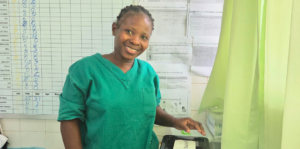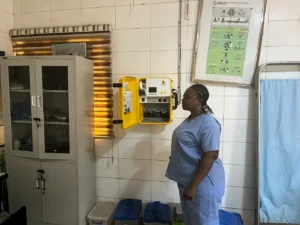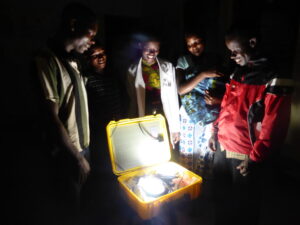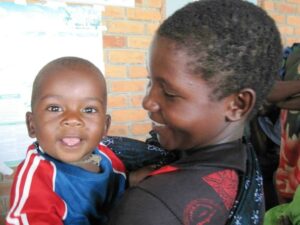 Well, it’s all turning out even better than expected. The solar installers arrived on time and are busy installing lights, batteries, and electric outlets in the delivery room, maternity ward, and operating room. We tested our new inverter with the suction machine that Hal recommended days before the trip. It worked! That means surgeries no longer have to be conducted without suction, and won’t be cancelled because of lack of gauze. Two days ago, we were offered a reasonable price on a fantastic blood bank refrigerator! This was going to be PHASE III of the project, and instead we will be able to get it installed on Monday! This essential piece of emergency equipment will enable mothers who are bleeding to immediately obtain life-saving blood products. Compare that to the current system of transfusion, in which families must first arrange for blood donors to come to the hospital and be tested for suitable matches before a transfusion can occur. I have literally been here when women have bled to death in the middle of the night because there is no transportation available to get family members to rural villages to hunt for possible blood donors. As hemorrhage is the number one cause of maternal mortality, there couldn’t be a more important piece of equipment in the hospital. Muyi Lawal has arranged to install the refrigerator before we obtain funding….a total act of generosity and trust. If anyone would like to contribute to this part of the project, your donations will be put to immediate use! Read more about the progress of the project by clicking on “Laura’s Blog.”
Well, it’s all turning out even better than expected. The solar installers arrived on time and are busy installing lights, batteries, and electric outlets in the delivery room, maternity ward, and operating room. We tested our new inverter with the suction machine that Hal recommended days before the trip. It worked! That means surgeries no longer have to be conducted without suction, and won’t be cancelled because of lack of gauze. Two days ago, we were offered a reasonable price on a fantastic blood bank refrigerator! This was going to be PHASE III of the project, and instead we will be able to get it installed on Monday! This essential piece of emergency equipment will enable mothers who are bleeding to immediately obtain life-saving blood products. Compare that to the current system of transfusion, in which families must first arrange for blood donors to come to the hospital and be tested for suitable matches before a transfusion can occur. I have literally been here when women have bled to death in the middle of the night because there is no transportation available to get family members to rural villages to hunt for possible blood donors. As hemorrhage is the number one cause of maternal mortality, there couldn’t be a more important piece of equipment in the hospital. Muyi Lawal has arranged to install the refrigerator before we obtain funding….a total act of generosity and trust. If anyone would like to contribute to this part of the project, your donations will be put to immediate use! Read more about the progress of the project by clicking on “Laura’s Blog.”
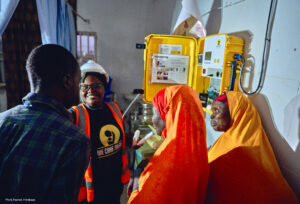
Lighting the Way: Hajara’s Journey as a Woman Solar Installer in Northern Nigeria
When Mohammed Hajara Adamu received a call from her former lecturer, Engineer Gloria Jola, she had no idea what was in store.

